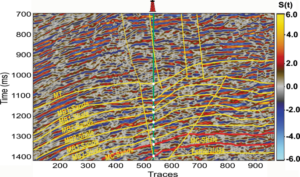Introduction to Multi Head Architecture For 3D Densenet 121
Deep learning and computer vision researchers are constantly looking for more effective and precise models. Scientists are always coming up with new ways to push the boundaries as the demand for more complex visual recognition jobs increases. A notable accomplishment that has garnered significant attention is the integration of multi-head architecture with 3D DenseNet 121.
Understanding Multi-Head Architecture
At its center, multi-head architecture is a procedure that includes the joining of various output layers in a neural network, each focusing on various parts of the information. This approach permits the model to learn assorted portrayals of the information, prompting upgraded execution across different assignments all the while.
Advantages of Multi-Head Architecture
1. Enhanced Feature Representation:
By incorporating multiple heads, the model can extract and analyze different features from the input data. This leads to a more comprehensive understanding of the underlying patterns, improving the overall performance of the network.
2. Task-Specific Learning:
Each head in the multi-head architecture can be tailored to address a specific task or objective. This enables the model to specialize in various tasks simultaneously, offering versatility and adaptability across different domains.
3. Improved Generalization:
The diversified learning provided by multi-head architecture promotes better generalization capabilities. The model becomes adept at recognizing patterns across a wide range of inputs, resulting in robust performance even on unseen data.
Leveraging 3D DenseNet 121
3D DenseNet 121 fills in as the foundation of this imaginative methodology, giving a strong groundwork to multi-head engineering. As an augmentation of the generally acclaimed DenseNet design, 3D DenseNet 121 succeeds in dealing with volumetric information, making it ideal for undertakings including three-layered data sources, for example, clinical imaging and video handling.
Key Elements of 3D DenseNet 121
1. Dense Connectivity:
Built upon the concept of dense connectivity, 3D DenseNet 121 fosters extensive information flow throughout the network. This dense interconnection facilitates feature reuse, enabling efficient parameter utilization and enhancing model performance.
2. Efficient Parameter Sharing:
By sharing parameters across layers, 3D DenseNet 121 optimizes parameter usage and mitigates the risk of overfitting. This results in more compact models with improved generalization capabilities, making them suitable for deployment in resource-constrained environments.
3. Hierarchical Feature Extraction:
The hierarchical feature extraction mechanism of 3D DenseNet 121 empowers the model to catch multi-scale portrayals of the info information. This various leveled approach improves the model’s capacity to recognize multifaceted examples and designs, prompting unrivaled execution across assorted undertakings.
Applications of Multi-Head Architecture with 3D DenseNet 121
The combination of multi-head architecture and 3D DenseNet 121 unlocks a myriad of possibilities across various domains. Some notable applications include:
1. Medical Imaging:
In the field of clinical imaging, the capacity to separate itemized highlights from volumetric information is essential for exact analysis and treatment arranging. By utilizing multi-head engineering with 3D DenseNet 121, clinical experts can accomplish more exact division, arrangement, and location of anomalies in clinical outputs.
2. Video Analysis:
In video examination undertakings, for example, activity acknowledgment and scene understanding, the use of multi-head engineering with 3D DenseNet 121 empowers vigorous spatiotemporal element extraction. This enables frameworks to precisely dissect and decipher dynamic visual substance, preparing for applications in observation, content control, and diversion.
3. Autonomous Driving:
Autonomous vehicles depend on refined discernment frameworks to explore securely in complex conditions. By coordinating multi-head design with 3D DenseNet 121, these discernment frameworks can proficiently handle three-layered sensor information, improving article discovery, following, and scene grasping abilities for independent driving applications.
Conclusion
The combination of multi-head engineering with 3D DenseNet 121 addresses a huge jump forward in the field of profound learning and PC vision. By bridling the force of broadened highlight extraction and progressive portrayal realizing, this approach empowers more precise, productive, and flexible models across a large number of errands and applications.



